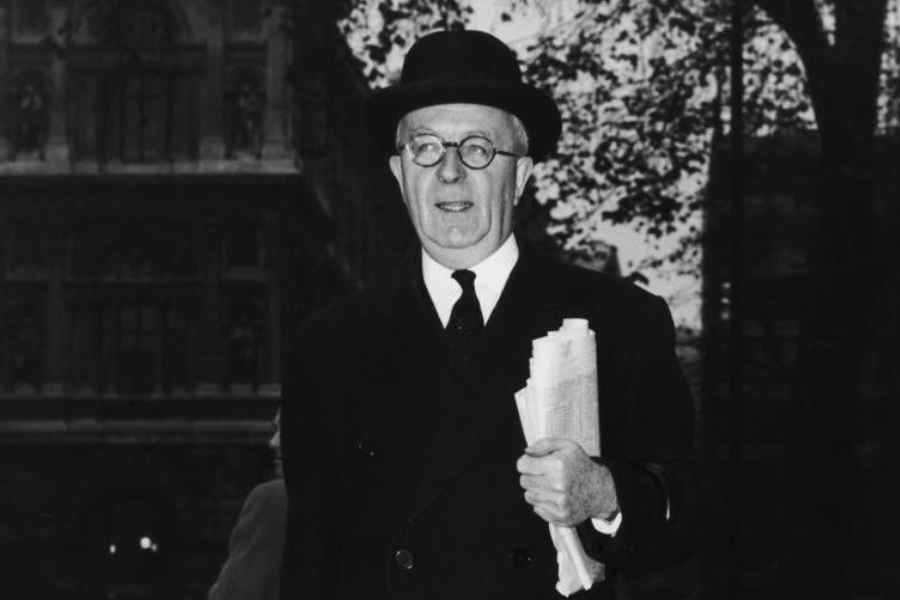Why have cartographic realities created by British geographers, administrators and lawyers suddenly come alive to dominate South Asian politics? From the Makran to our west, to what was once termed the Arakan to our east, the names that underwrite the lexicon of contemporary geopolitical analysis are Goldsmid, Durand, Pemberton, Johnson, McMahon and, of course, Radcliffe.
The most dramatic of these manifestations was in the hinterland of the Makran coast on the Pakistan-Iran border. In the early 1870s, the British, driven equally by the impulse to clarify India’s frontiers and establish buffers, demarcated what is now the Pakistan-Iran border through the Goldsmid Line. Sir Frederic John Goldsmid also arbitrated and settled the Iran-Afghanistan border. In effect, the Baloch as an ethnic entity were trifurcated among Iran, British India (later Pakistan) and a smaller part in Afghanistan; also divided in the process between Iran and Pakistan was the Makran Coast.
This border witnessed, exactly a month ago, intense clashes with missile and drone strikes first by Iran and, then, in retaliation, by Pakistan. This is not a territorial dispute and neither country questions the legitimacy of the border or of its alignment. The frictions — the January 2024 clashes were only the most recent — essentially arise because the Baloch tribes in both countries have an uneasy coexistence with the governments. In both Pakistan and in Iran, the Baloch are alienated and disaffected and frequently seen as fifth-columnists supported by the other or by third parties.
The Baloch factor has contributed much to the strategic mistrust between Iran and Pakistan although both countries try to maintain a veneer of Islamic fraternity, notwithstanding serious clashes like last month’s. Around 2010, Iran began constructing a wall along the border as insulation against the smuggling of narcotics and to check the ingress of terrorists. About a decade later, Pakistan also began building its own fence on the border. While both countries support their mutual fencing-off of each other, many Baloch disagree and see this as an effort to cement the barriers that divide them.
Better known, and more consistently in the news, is the Durand Line demarcating the Pakistan-Afghanistan border. Sir Henry Mortimer Durand was its architect and much as the Goldsmid Line did for the Baloch, his creation divided the Pashtun tribes all along its length. The difference with the Iran-Pakistan situation is that Afghanistan has refused to accept the legality of the Durand Line and, more seriously for Pakistan, so do many Pashtuns who live alongside it.
Many of the frictions in the Pakistan-Afghanistan interface emerge from this point and, in particular, from Pakistan’s efforts to better regulate the border by fencing it. Such a fence is seen as the only sustainable solution to the national security threat Pakistan faces from the easy ingress the Tehrik-i-Taliban has from its sanctuaries in Afghanistan. The fence, as also Pakistan’s efforts to introduce passports and compulsory visas for travel, is seen as an erosion of the traditionally free movement enjoyed by the Pashtun tribes and is strongly denounced on both sides of the Durand Line.
Further to the north and the north-east comes the India-China border and all the accumulated issues around the Line of Actual Control that has been in place since the 1962 India-China war. The roots of the territorial dispute, however, lie in the legacy of an earlier cartography. The Johnson Line in the 1860s was the work of a British surveyor, William Johnson, and it placed the region of Aksai Chin adjoining Ladakh within the border of the then princely state of Jammu and Kashmir. To the north-east is the McMahon Line — the contribution of Henry McMahon — to demarcate the Tibet-India border. These two form the basis of our understanding that Aksai Chin and Arunachal Pradesh fall within India’s borders. China rejects both the Johnson Line and the McMahon Line and in many ways that forms the bedrock on which the India-China border disputation rests.
Finally, at the eastern extremity of our continental borders, is the India-Myanmar boundary. This has been in the news following the recent announcement by the Government of India that it intends to fence the border with Myanmar and also end the free movement regime that permitted tribal communities living in proximity to the border to cross it. The India-Myanmar border, as it is constituted at present, was formalised by the two governments in 1967, but it is derived in entirety from 19th-century cartographic exercises.
The earliest of these was the Pemberton Line of Captain R. Boileau Pemberton in 1834. This was subsequently modified by other officials and would become by the close of the century the Pemberton-Johnstone-Maxwell Line. This would later be codified into the India-Burma border demarcation agreement of 1967. The line divided different tribal conglomerates, including the Nagas, the Kukis and the Mizos from their counterparts in Burma — now Myanmar — and is now increasingly referred to as a forgotten partition, perhaps because the impact of these cartographic interventions was felt incrementally and the borders became progressively harder only very gradually. The announcement of the fencing and the ending of the free movement regime is the latest step in their securitisation and is bound to be objected to as protests from Nagaland, Mizoram and from the Kukis in Manipur already suggest.
Is there a general pattern to all this apart from the obvious one that old lines have long shadows? It may well be that the Radcliffe Line on both the east and the west has become a kind of model for other borders in South Asia — hard, securitised and tightly regulated. Cyril Radcliffe is much excoriated — in social commentary and in literature — for his brutal caesarian sections; the irony is that Radcliffe’s borders, now fenced and tightly controlled, have become a template for so many others. Perhaps more than ever before, South Asia, from its western to eastern extremity, will test, over the rest of this decade, whether the old adage, ‘good fences make good neighbours’, still holds true.
T.C.A. Raghavan is a former Indian High Commissioner to Pakistan and Singapore










